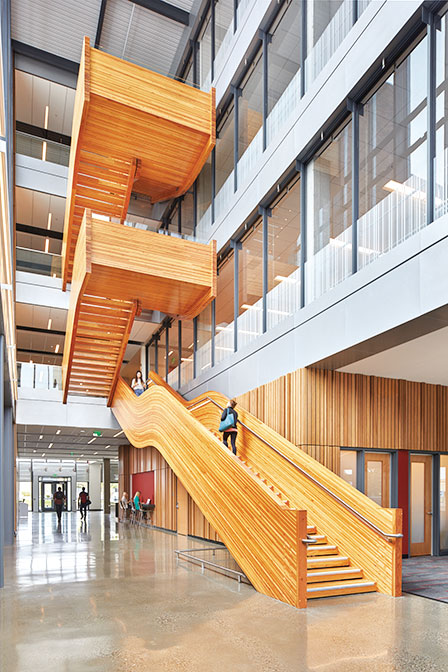Small-diameter or diseased timber thinned from forests improve forest health and reduce fire risk.
Low-quality boards from that timber compressed and glued into layers make CROSS-LAMINATED TIMBER (CLT), also called mass timber, a building product developed in Austria in the 1990s.
When glued together, CLT is comparable in strength to steel and concrete.
It also requires much less energy to manufacture and transport than steel or concrete.
CLT is a carbon sink: Instead of having the wood degrade or burn in the forest, using it for buildings locks up carbon that contribute to climate change.
Due to its strength, CLT can be used for the structural components of a building.
Researchers assessed the material’s seismic performance, an important consideration for buildings in the Pacific Northwest.
The roof of Pullman’s Brelsford WSU Visitor Center, opened in 2013, is made of CLT—the first university building to use the material in the United States.
PACCAR Environmental Technology Building at WSU Pullman, built in 2016, also includes CLT.
In 2018, Washington became the first state to allow structural use of mass timber in buildings as tall as 18 stories.

(Photo Benjamin Benschneider)
